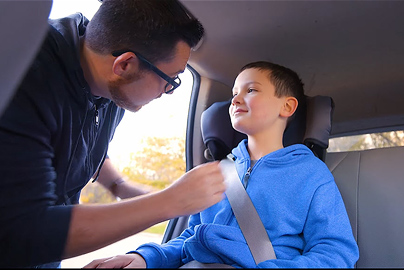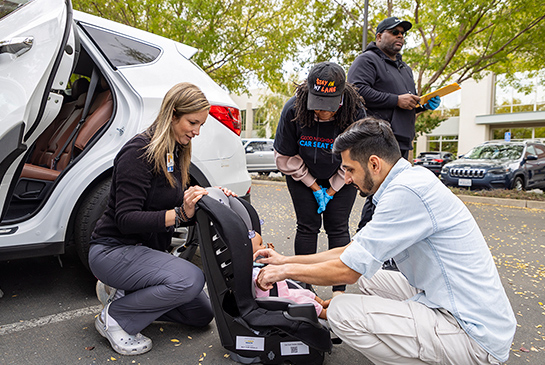Car Seat Safety
School-Age Children: Booster Seats and Seat Belts

- Combination seat – using a lap-shoulder belt and internal harness removed.
- High-back booster seat – must be used when a vehicle does not have a head restraint.
- Backless booster seat – suitable for use when a vehicle has a head restraint in place.
Safety Tips
- Children are ready to use a booster seat when they weigh 40 pounds or have outgrown their five-point harness. Some child safety seats have a harness weight limit beyond 40 pounds. It is preferable to continue using the five-point harness until your child reaches that weight limit or has outgrown the seat.
- Must be used with lap and shoulder belts.
- The shoulder belt fits snugly across the chest and rests on the shoulder.
- The lap belt lies snugly across the upper thighs and below the hips.
- Secure the booster seat in the back seat of the vehicle.
- When a child is not in the booster seat, secure the booster with the seat belt to ensure the loose seat does not cause injury.
- Manufacturer’s weight and height limits vary. The minimum weight ranges from 40 to 50 pounds, and the maximum weight ranges from 80 to 120 pounds. Height limits vary from a minimum of 40 inches to a maximum of 59 inches. Be sure to follow instructions. Always follow the car seat manufacturer’s instructions and the vehicle’s guidelines to ensure the seat is used properly.
Videos
-
How to Use a Booster Seat
How to Use a Booster Seat
Basic tips on how to use and secure a child in a booster seat. A child is typically ready for a booster seat when they have outgrown their forward-facing car seat with a harness. This is usually when children are around ages 4-7, weigh at least 40 pounds, and are at least 40 inches tall.


